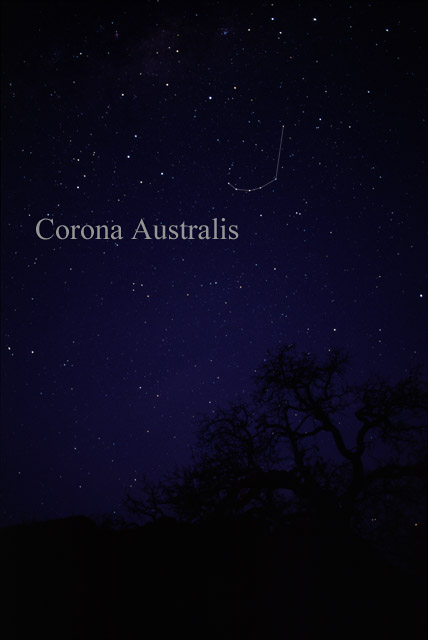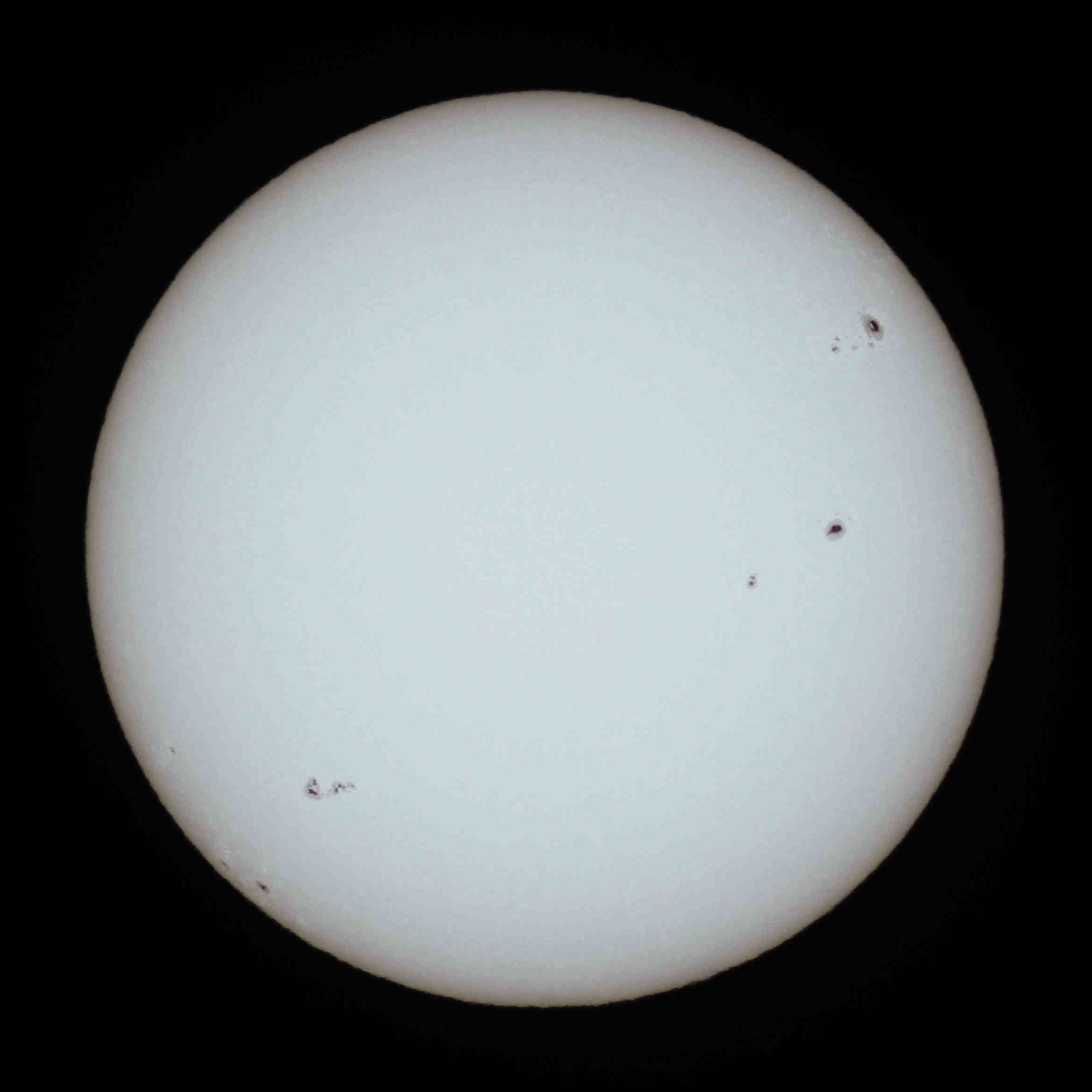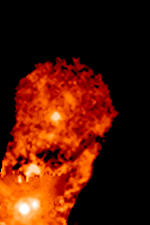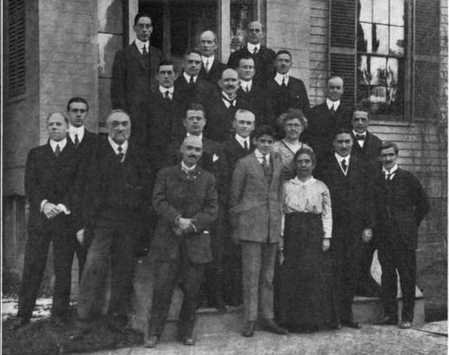|
S Coronae Australis
S Coronae Australis (S CrA), is a young binary star system estimated to be around 2 million years old located in the constellation Corona Australis. It is composed of a G-type main sequence star that is about as luminous as and just over twice as massive as the Sun, and a smaller K-type main sequence star that has around 50-60% of the Sun's luminosity and 1.3 times its mass. Both stars are T Tauri stars and both show evidence of having circumstellar disks. The system is around 140 parsecs distant. Johann Friedrich Julius Schmidt discovered that the star is a variable star, in 1866. It appeared with its variable star designation In astronomy, a variable-star designation is a unique identifier given to variable stars. It extends the Bayer designation format, with an identifying label (as described below) preceding the Latin genitive of the name of the constellation in whic ... in Annie Jump Cannon's 1907 work ''Second Catalogue of Variable Stars''. References {{DEFA ... [...More Info...] [...Related Items...] OR: [Wikipedia] [Google] [Baidu] |
Corona Australis
Corona Australis is a constellation in the Southern Celestial Hemisphere. Its Latin name means "southern crown", and it is the southern counterpart of Corona Borealis, the northern crown. It is one of the 48 constellations listed by the 2nd-century astronomer Ptolemy, and it remains one of the 88 modern constellations. The Ancient Greeks saw Corona Australis as a wreath rather than a crown and associated it with Sagittarius or Centaurus. Other cultures have likened the pattern to a turtle, ostrich nest, a tent, or even a hut belonging to a rock hyrax. Although fainter than its northern counterpart, the oval- or horseshoe-shaped pattern of its brighter stars renders it distinctive. Alpha and Beta Coronae Australis are the two brightest stars with an apparent magnitude of around 4.1. Epsilon Coronae Australis is the brightest example of a W Ursae Majoris variable in the southern sky. Lying alongside the Milky Way, Corona Australis contains one of the closest star-forming region ... [...More Info...] [...Related Items...] OR: [Wikipedia] [Google] [Baidu] |
K-type Main-sequence Stars
K-type may refer to: *AEC K-type, a bus chassis *K-type star, a stellar spectral classification *K-type filter Constant k filters, also k-type filters, are a type of electronic filter designed using the image method. They are the original and simplest filters produced by this methodology and consist of a ladder network of identical sections of passive co ..., a type of electronic filter * K-type asteroid, an unusual kind of asteroid {{disambig ... [...More Info...] [...Related Items...] OR: [Wikipedia] [Google] [Baidu] |
G-type Main-sequence Stars
A G-type main-sequence star (spectral type: G-V), also often, and imprecisely, called a yellow dwarf, or G star, is a main sequence, main-sequence star (luminosity class V) of stellar classification, spectral type G. Such a star has about 0.9 to 1.1 solar masses and an effective temperature between about . Like other main-sequence stars, a G-type main-sequence star converts the Chemical element, element hydrogen to helium in its core by means of nuclear fusion. The Sun, the star in the center of the Solar System to which the Earth is gravitationally bound, is an example of a G-type main-sequence star (G2V type). Each second, the Sun fuses approximately 600 million tons of hydrogen into helium in a process known as the proton–proton chain (4 hydrogens form 1 helium), Mass–energy equivalence, converting about 4 million tons of matter to energy. Besides the Sun, other well-known examples of G-type main-sequence stars include Alpha Centauri, Tau Ceti, and 51 Pegasi. Description Th ... [...More Info...] [...Related Items...] OR: [Wikipedia] [Google] [Baidu] |
T Tauri Stars
T Tauri stars (TTS) are a class of variable stars that are less than about ten million years old. This class is named after the prototype, T Tauri, a young star in the Taurus star-forming region. They are found near molecular clouds and identified by their optical variability and strong chromospheric lines. T Tauri stars are pre-main-sequence stars in the process of contracting to the main sequence along the Hayashi track, a luminosity–temperature relationship obeyed by infant stars of less than 3 solar masses () in the pre-main-sequence phase of stellar evolution. It ends when a star of or larger develops a radiative zone, or when a smaller star commences nuclear fusion on the main sequence. History While T Tauri itself was discovered in 1852, the T Tauri class of stars were initially defined by Alfred Harrison Joy in 1945. Characteristics T Tauri stars comprise the youngest visible F, G, K and M spectral type stars (). Their surface temperatures are similar to t ... [...More Info...] [...Related Items...] OR: [Wikipedia] [Google] [Baidu] |
Annie Jump Cannon
Annie Jump Cannon (; December 11, 1863 – April 13, 1941) was an American astronomer whose cataloging work was instrumental in the development of contemporary stellar classification. With Edward C. Pickering, she is credited with the creation of the Stellar classification, Harvard Classification Scheme, which was the first serious attempt to organize and classify stars based on their temperatures and spectral types. She was nearly deaf throughout her career after 1893, as a result of scarlet fever. She was a Suffragette, suffragist and a member of the National Woman's Party, National Women's Party. Personal life Cannon was born on December 11, 1863, in Dover, Delaware. She was the eldest of three daughters born to Wilson Cannon, a Delaware shipbuilder and state senator, and his second wife, Mary Jump. Cannon's mother was the first person to teach her the constellations and she encouraged her to follow her own interests, suggesting that she pursue studies in mathematics, chemistry ... [...More Info...] [...Related Items...] OR: [Wikipedia] [Google] [Baidu] |
Variable Star Designation
In astronomy, a variable-star designation is a unique identifier given to variable stars. It extends the Bayer designation format, with an identifying label (as described below) preceding the Latin genitive of the name of the constellation in which the star lies. The identifying label can be one or two Latin letters or a ''V'' plus a number (e.g. V399). Examples are R Coronae Borealis, YZ Ceti, V603 Aquilae. (''See'' List of constellations ''for a list of constellations and the genitive forms of their names''.) Naming The current naming system is: * Stars with existing Greek letter Bayer designations are not given new designations. * Otherwise, start with the letter R and go through Z. * Continue with RR–RZ, then use SS–SZ, TT–TZ and so on until ZZ. * After ZZ return to the beginning of the Latin alphabet and use AA–AZ, BB–BZ, CC–CZ, and so on, until reaching QZ, but omitting the letter J in either first or second position. * Abandon the Latin letters after all ... [...More Info...] [...Related Items...] OR: [Wikipedia] [Google] [Baidu] |
Circumstellar Disk
A Circumstellar disc (or circumstellar disk) is a torus, pancake or ring-shaped accretion disk of matter composed of gas, dust, planetesimals, asteroids, or collision fragments in orbit around a star. Around the youngest stars, they are the reservoirs of material out of which planets may form. Around mature stars, they indicate that planetesimal formation has taken place, and around white dwarfs, they indicate that planetary material survived the whole of stellar evolution. Such a disc can manifest itself in various ways. Young star According to the widely accepted model of star formation, sometimes referred to as the nebular hypothesis, a young star (protostar) is formed by the gravitational collapse of a pocket of matter within a giant molecular cloud. The infalling material possesses some amount of angular momentum, which results in the formation of a gaseous protoplanetary disc around the young, rotating star. The former is a rotating circumstellar disc of dense gas and ... [...More Info...] [...Related Items...] OR: [Wikipedia] [Google] [Baidu] |
Constellation
A constellation is an area on the celestial sphere in which a group of visible stars forms Asterism (astronomy), a perceived pattern or outline, typically representing an animal, mythological subject, or inanimate object. The first constellations were likely defined in prehistory. People used them to relate stories of their beliefs, experiences, creation myth, creation, and mythology. Different cultures and countries invented their own constellations, some of which lasted into the early 20th century before today's constellations were internationally recognized. The recognition of constellations has changed significantly over time. Many changed in size or shape. Some became popular, only to drop into obscurity. Some were limited to a single culture or nation. Naming constellations also helped astronomers and navigators identify stars more easily. Twelve (or thirteen) ancient constellations belong to the zodiac (straddling the ecliptic, which the Sun, Moon, and planets all traver ... [...More Info...] [...Related Items...] OR: [Wikipedia] [Google] [Baidu] |
Photometric System
In astronomy, a photometric system is a set of well-defined passbands (or optical filters), with a known sensitivity to incident radiation. The sensitivity usually depends on the optical system, detectors and filters used. For each photometric system a set of primary standard stars is provided. A commonly adopted standardized photometric system is the Johnson-Morgan or UBV photometric system (1953). At present, there are more than 200 photometric systems. Photometric systems are usually characterized according to the widths of their passbands: * broadband (passbands wider than 30 nm, of which the most widely used is Johnson-Morgan UBV system) * intermediate band (passbands between 10 and 30 nm wide) * narrow band (passbands less than 10 nm wide) Photometric letters Each letter designates a section of light of the electromagnetic spectrum; these cover well the consecutive major groups, near-ultraviolet (NUV), visible light (centered on the V band), near-infra ... [...More Info...] [...Related Items...] OR: [Wikipedia] [Google] [Baidu] |
Binary Star
A binary star or binary star system is a system of two stars that are gravitationally bound to and in orbit around each other. Binary stars in the night sky that are seen as a single object to the naked eye are often resolved as separate stars using a telescope, in which case they are called ''visual binaries''. Many visual binaries have long orbital periods of several centuries or millennia and therefore have orbits which are uncertain or poorly known. They may also be detected by indirect techniques, such as spectroscopy (''spectroscopic binaries'') or astrometry (''astrometric binaries''). If a binary star happens to orbit in a plane along our line of sight, its components will eclipse and transit each other; these pairs are called ''eclipsing binaries'', or, together with other binaries that change brightness as they orbit, ''photometric binaries''. If components in binary star systems are close enough, they can gravitationally distort each other's outer stellar atmospheres. ... [...More Info...] [...Related Items...] OR: [Wikipedia] [Google] [Baidu] |
T Tauri Star
T Tauri stars (TTS) are a class of variable stars that are less than about ten million years old. This class is named after the prototype, T Tauri, a young star in the Taurus Molecular Cloud, Taurus star-forming region. They are found near molecular clouds and identified by their optical variable star, variability and strong chromosphere, chromospheric lines. T Tauri stars are pre-main-sequence stars in the process of contracting to the main sequence along the Hayashi track, a luminosity–temperature relationship obeyed by infant stars of less than 3 solar masses () in the pre-main-sequence phase of stellar evolution. It ends when a star of or larger develops a radiative zone, or when a smaller star commences nuclear fusion on the main sequence. History While T Tauri itself was discovered in 1852, the T Tauri class of stars were initially defined by Alfred Harrison Joy in 1945. Characteristics T Tauri stars comprise the youngest visible F, G, K and M spectral type stars ( ... [...More Info...] [...Related Items...] OR: [Wikipedia] [Google] [Baidu] |





